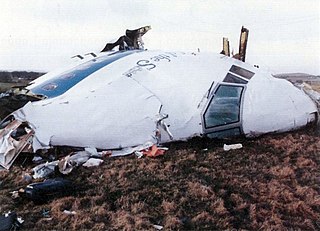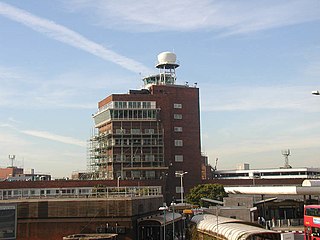Aircraft hijacking is the unlawful seizure of an aircraft by an individual or a group. Dating from the earliest of hijackings, most cases involve the pilot being forced to fly according to the hijacker's demands. There have also been incidents where the hijackers have overpowered the flight crew, made unauthorized entry into the cockpit and flown them into buildings – most notably in the September 11 attacks – and in several cases, planes have been hijacked by the official pilot or co-pilot; e.g., Ethiopian Airlines Flight 702.
After the September 11 attacks, there was an immediate call to action regarding the state of aviation security measures as the hijackers involved in 9/11 were able to successfully pass through security and take command of the plane. The existing security measures flagged more than half of the 19 hijackers in 9/11; however, they were cleared to board the plane because their bags were not found to contain any explosives. In the months and years following September 11, 2001, security at many airports worldwide were reformed to deter similar terrorist plots.

Shannon Airport is an international airport located in County Clare in the Republic of Ireland. It is adjacent to the Shannon Estuary and lies halfway between Ennis and Limerick. With over 1.5 million passengers in 2022, the airport is the third busiest airport in the Republic of Ireland, and the fifth busiest on the island.

The Transportation Security Administration (TSA) is an agency of the United States Department of Homeland Security (DHS) that has authority over the security of transportation systems within, and connecting to the United States. It was created as a response to the September 11 attacks to improve airport security procedures and consolidate air travel security under a dedicated federal administrative law agency.

Airport security includes the techniques and methods used in an attempt to protect passengers, staff, aircraft, and airport property from malicious harm, crime, terrorism, and other threats.
A sky marshal is a covert law enforcement or counter-terrorist agent on board a commercial aircraft to counter aircraft hijackings. Such an agent is also known as an air marshal, a flight marshal, or an in-flight security officer (IFSO). Sky marshals may be provided by airlines such as El Al, or by government agencies such as the Austrian Einsatzkommando Cobra, Royal Canadian Mounted Police, German Federal Police, National Security Guard in India, Metropolitan Police SO19 from London, Pakistan Airports Security Force, or US Federal Air Marshal Service.

The 1985 Narita International Airport bombing was the attempted terrorist bombing of Air India Flight 301, which took place on June 23, 1985. A bomb hidden in a suitcase transiting through New Tokyo International Airport exploded at 06:19 23 June 1985 in a baggage handling room, killing two baggage handlers and injuring another four. The bomb exploded prematurely while the plane was still grounded. The attack at Narita was part of an attempted double-bombing orchestrated by Talwinder Singh Parmar, a Canadian national, and the Sikh terrorist organization, Babbar Khalsa. The bombs were made by Inderjit Singh Reyat.

The investigation into the bombing of Pan Am Flight 103 began at 19:03 on December 21, 1988 when Pan Am Flight 103 was blown up over Lockerbie in Dumfries and Galloway, Scotland. The perpetrators had intended the plane to crash into the sea, destroying any traceable evidence, but the late departure time of the aircraft meant that its explosion over land left a veritable trail of evidence. The investigation led to the prosecution, conviction, and imprisonment of Abdelbaset al-Megrahi.

Poprad–Tatry Airport is an airport in the Slovak ski resort town of Poprad. It is an airport with one of the highest elevations in Central Europe, at 718 m, which is 150 m higher than Innsbruck Airport in Austria, and 989 m lower than Samedan Airport in Switzerland.

The 2006 transatlantic aircraft plot was a terrorist plot to detonate liquid explosives, carried aboard airliners travelling from the United Kingdom to the United States and Canada, disguised as soft drinks. The plot was discovered by British Metropolitan police during an extensive surveillance operation. A number of security measures were taken in response to the 2006 transatlantic aircraft plot.

Turkish Airlines Flight 1476 (TK1476) was a Turkish Airlines Boeing 737-4Y0 flying from Tirana to Istanbul that was hijacked by Hakan Ekinci in Greek airspace on 3 October 2006. Ekinci demanded to go to Rome to speak with the Pope, but Greek and Italian F-16 Fighting Falcon jets intercepted and escorted the aircraft until it landed in Brindisi, Italy. Nobody was harmed, and Ekinci was jailed in Italy while awaiting trial. At first, the hijacking incident was linked with the envisaged visit of Pope Benedict XVI to Turkey, but later, it was ascertained that Ekinci was seeking to request political asylum from Italy. On 4 October, a Turkish Airlines plane was sent to take the other passengers to Istanbul.

The Glasgow Airport attack was a terrorist ramming attack which occurred on 30 June 2007, at 15:11 BST, when a dark green Jeep Cherokee loaded with propane canisters was driven at the glass doors of the Glasgow Airport terminal and set ablaze. The car's driver was severely burnt in the ensuing fire, and five members of the public were injured, none seriously. Some injuries were sustained by those assisting the police in detaining the occupants. A close link was quickly established to the 2007 London car bombs the previous day.
Danube Wings, trading as VIP Wings, a.s., was a Slovakia-based airline that ceased operations in 2013. Danube Wings had operated regional scheduled services on domestic and international routes using ATR 72 aircraft. Its home base was M. R. Štefánik Airport in Bratislava. VIP Wings, a privately owned Slovak company, was the holder of the licences and the AOC.

The 2006 transatlantic aircraft plot was a terrorist plot to detonate liquid explosives, carried aboard airliners travelling from the United Kingdom to the United States and Canada, disguised as soft drinks. The plot was discovered by British Metropolitan police during an extensive surveillance operation. As a result of the plot, unprecedented security measures were initially implemented at airports. The measures were gradually relaxed during the following weeks, but passengers are still not allowed to carry liquid containers larger than 100 ml onto commercial aircraft in their hand luggage in the UK and most other countries, as of 2023.

Braathens SAFE Flight 139 was an aircraft hijacking that occurred in Norway on 21 June 1985. The incident took place on a Boeing 737-205 belonging to Braathens SAFE that was on a scheduled flight from Trondheim Airport, Værnes to Oslo Airport, Fornebu. The hijacker was Stein Arvid Huseby, who was drunk during most of the incident. It was the first plane hijacking to take place in Norway; there were no deaths and no injuries. Huseby was sentenced to three years' imprisonment and five years' detention.
The attempted bombing of Northwest Airlines Flight 253 occurred on December 25, 2009, aboard an Airbus A330 as it prepared to land at Detroit Metropolitan Airport following a transatlantic flight from Amsterdam. Attributed to the terrorist organization al-Qaeda in the Arabian Peninsula (AQAP), the act was undertaken by 23-year-old Nigerian national Umar Farouk Abdulmutallab using chemical explosives sewn to his underwear. These circumstances, including the date, led to Abdulmutallab being commonly nicknamed either the "Underwear bomber" or "Christmas Day bomber" by American media outlets.
This is a list of aviation-related events from 2010.
Airport racial profiling in the United States is U.S. government activity directed at a suspect or group of suspects because of their race or ethnicity. Under Fourth Amendment analysis, objective factors measure whether law enforcement action is constitutional, and under the Fourteenth Amendment challenges to the practice are assessed under the customary strict scrutiny test for racial classifications.

The Air Canada masked stowaway case, also known as the Case of the "Disguised Man" (“易容男”案发) in Chinese, began with a stowaway incident on October 29, 2010, when a young man of Chinese descent illegally boarded Air Canada Flight 018, flying from Hong Kong to Vancouver wearing a commercially available silicone head and neck mask to impersonate a white elderly man. He removed the mask in the aircraft lavatory later in the flight, and a passenger alerted the crew after a young Asian man tried to occupy the seat formerly occupied by what appeared to be an old white man. The crew questioned the man and then alerted authorities who took the man into custody after landing. He requested asylum in Canada, and was released on bond three months later. Because of privacy concerns the Canada Border Services Agency and the Immigration Ministry would not reveal the man's name. The incident was detailed in a confidential CBSA alert titled "Unbelievable Case Of Concealment" that was leaked to the American news network CNN who made it an international story on November 5. In Hong Kong, an organized crime probe was launched after this case embarrassed security services, and several people were arrested and convicted in conjunction with this and related cases.












